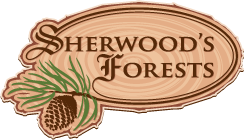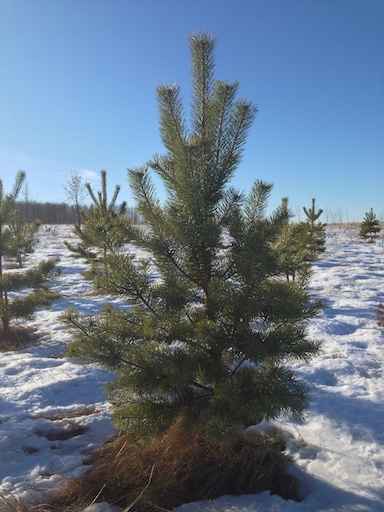
Scots Pine.
Conifers
They aren't all Christmas trees
I don't call these evergreens, since the larch family (Larix) shed their needles every fall. And there are leaf trees that don't shed. (None that grow here however...)
I've taken a couple of liberties: The cedars and the junipers are gathered together. The differences are subtle. I've lumped douglas fir into the other firs. Many of the readily visible features are similar, and there's only the one I can grow here.
Firs and spruces have classic Christmas tree shapes.
In an open space they remain more or less a cone all their life. Branching is dense. They basically block out most of that cone shape. Shade underneath is dark to the point that very little will grow unless lower branches are pruned away.
Pines and larches are more open. They are conical when young, but get more irregular as they mature. There is more twig, less needle. The shade underneath is open enough to support a lawn with a bit of help. Both groups tend to shed lower branches as they get older.
Cedars and junipers have scale like leaves, often merged into the twig. Junipers can be upright, or almost flat. Cedars can be trees, or multistem shrub, sometimes depending how it was pruned when young.
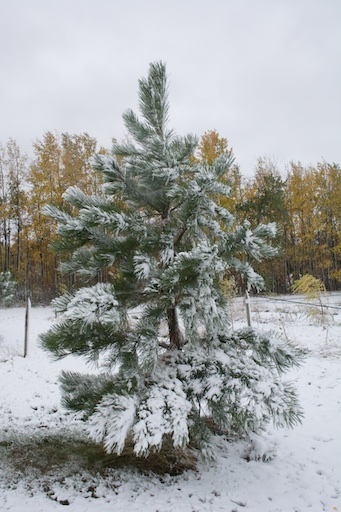
Ponderosa after first snow in Fall.
Pines
Pines are characterized by an open structure. Needles stay on for 3 to 6 years. Meanwhile the twigs get longer. The effect is a bouquet of bottle brushes. Most pines are open enough that other plants can grow in their shade. However the decomposing needles tend to make the soil acidic. If you want a lawn underneath, apply a light dose of lime or bonemeal every year or so. Most pines prefer a well drained soil.
Most pines are an loose cone when young. As they get older, they get a little sloppy. (I can relate to that...) Some just get a bit rounder, with branches that aren't as straight. Others go all over the place, and develop lots of character. Specific characteristics are noted by species.
Pines tend to drop their lower branches as they mature. In the larger pines this lends them an air of majesty.
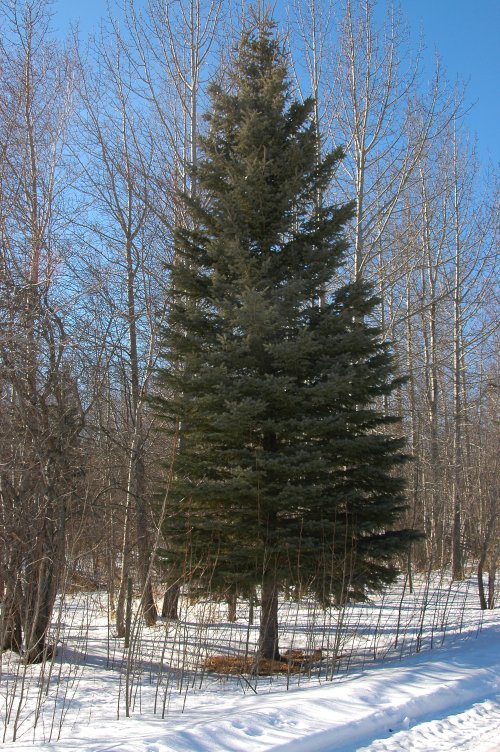
White Spruce -- probably between twenty and thirty years old.
Spruces
Spruces have short needles, and the branches subdivide more closely together than the pines. The net effect is that a spruce is more solid looking. You don't see the bare twigs where previous needles have fallen.
Spruce needles are stiff with very sharp tips.
Think of them as the porcupine of the conifer world.
The underside of a large spruce is dim. Even if you prune the lower branches away, very little will grow under a spruce. This is partly due to the dim light, partly due to the very dry conditions. Spruce tend to be water pigs. Their shape directs rain and snow away from the trunk.
Spruce are tolerant of heavy soils.
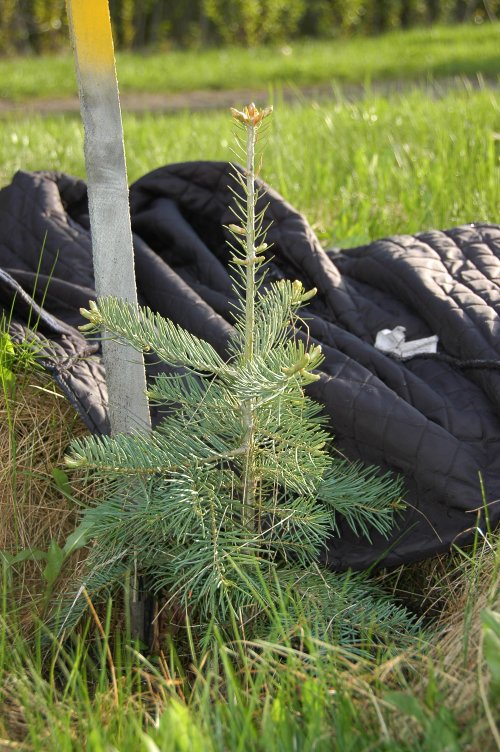
Young Concolor Fir in my front yard.
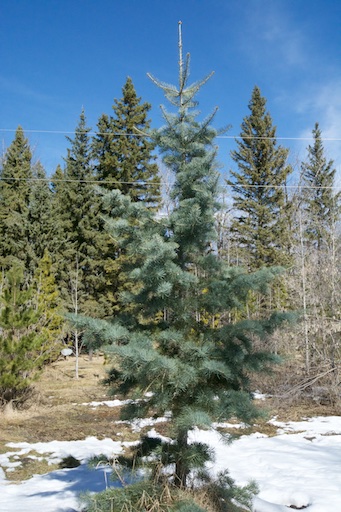
Same tree a few years later.
Firs
Firs are noted for having soft needles. The true firs have needles that are flat, and come on on either side of the twig. Some firs needles that curl upward, giving the illusion that the needles are spread around the twig.
Douglas fir shares the true fir's soft needles, but is actually a completely different genus. It's needles circle the twig. Needles tend to be finer than the true firs, and close to round.
Firs are just barely hardy here on the prairies. The only fir that is native here, Balsam Fir, can be found only where it is protected and gets extra moisture. I've found it on north running ravines draining into the North Saskatchewan River.
They are beautiful trees, but require some extra protection and extra water.
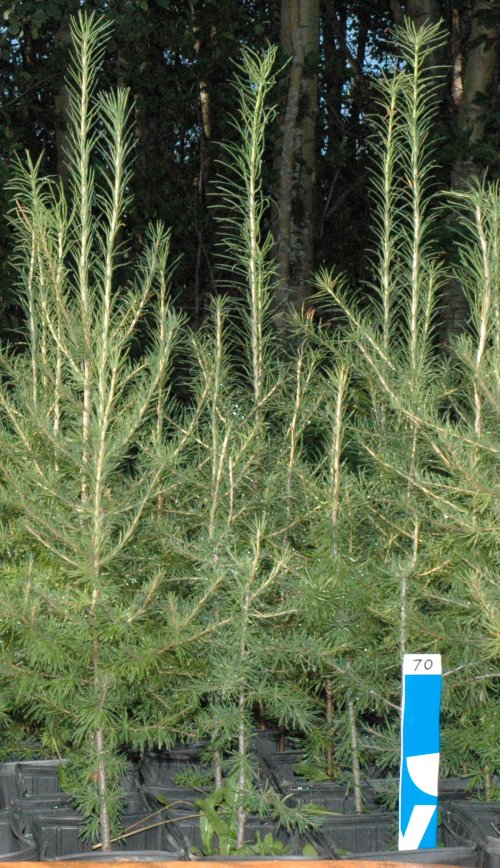
Siberian Larch in the pot yard.
Larches
Larches are unique. Nobody seems to be ambivalent about them.
They either love them or hate them.
For half the year they look like a dead Christmas Tree.
Then they go through the routine of bud break, leafing (needling?) out,
and in fall turning color, and shedding.
Most of the conifers show relatively little change through the year. Oh, some have pale green buds. Others have interesting cones, but the larch goes through a whole range of changes much as leaf trees do.
Cedars & Junipers
Cedars aren't common on the prairies. Folliage is in the form of green sprays -- as if the needles were combined with the twig.
They tend to not like our long dry winter. The top keeps losing water while the frozen roots are unable to replace it.
Junipers suffer from the same problem, but the low flat varieties spend most of the winter examining the bottom side of snowflakes.
Both of them do better when NOT sheltered from the wind. It that warm pocket of air on the south side of the house on a bright sunny winter day that does them in.
Got something to say? Email me: sfinfo@sherwoods-forests.com
Interesting? Share this page.
Want to talk right now? Call me: (8 am to 8 pm only, please) 1-780-848-2548
Do not arrive unannounced. Phone for an appointment. Why? See Contact & Hours That same page gives our hours of operation.
Back to Top
Copyright © 2008 - 2021 S. G. Botsford
Sherwood's Forests is located about 75 km southwest of Edmonton, Alberta. Please refer to the map on our Contact page for directions.
